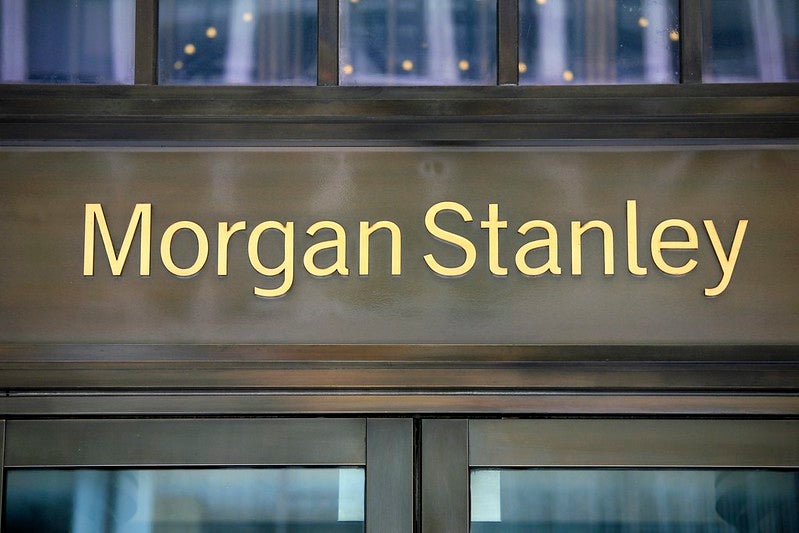While reform of the UK pension industry has opened up a market estimated to be worth £12bn, it will also further increase pressure on asset management firms to be transparent and competitive on fees.
The initial reaction to the changes announced by the Chancellor of the Exchequer in March was that platforms and asset managers would pick up a lot of new business as savers eschew annuities in favour of alternative retirement products. Barclays was reported as forecasting that the value of new UK annuity business would fall from £12bn to £4bn by 2015 and PwC predicted an even steeper decline of up to 75%.
However, like Mark Twain, annuities may have been written off prematurely. UK pensions minister Steve Webb told a parliamentary select committee that as many as 200,000 annuities could be sold each year – around half the current figure – while more than half of respondents to a survey published by PwC in April said they still wanted to buy products offered by financial institutions.
Paul Lee, head of investment affairs at the National Association of Pension Funds (NAPF) observes that annuities remain an option even though they are no longer compulsory. He says: "There is one school of thought which suggests that annuities should become more attractive as they now need to compete in the market and demonstrate their value, although the other perspective is that in a reduced market, pricing will become still less attractive."
He says the NAPF is aware that many firms are developing products offering a more flexible form of drawdown, for example an income from the pension pot that is not as fixed as an annuity and offers the prospect of some capital being left to be bequeathed. "A number of firms have also publicly announced changes to their retirement services divisions."
Looking at the experiences of the US and Australian pension industry, Lee says retirement products in these markets typically combine an element of an annuity or annuity-like guarantee with greater flexibility to respond to particular events or needs.
Gina Miller, founding partner SCM Private and promoter of the True and Fair Campaign has called on the FCA to offer guidance on the total costs and fees charged for pensions and annuities.
How well do you really know your competitors?
Access the most comprehensive Company Profiles on the market, powered by GlobalData. Save hours of research. Gain competitive edge.

Thank you!
Your download email will arrive shortly
Not ready to buy yet? Download a free sample
We are confident about the unique quality of our Company Profiles. However, we want you to make the most beneficial decision for your business, so we offer a free sample that you can download by submitting the below form
By GlobalDataCost cap
Lee acknowledges that the issue of fund manager costs is rising up the agenda, particularly given the UK government’s decision to impose a cap on the costs of DC pension default funds of 0.75%, with the threat that this cap will be further reduced over time.
He says: "Transparency is a necessary step for managers to be fully accountable to their clients and Pensions Regulator analysis indicating that schemes do not know what they are being charged is a strong sign that fund managers have a long way to go to be appropriately transparent. Some work is underway on this, but much more is necessary."
Tom McPhail, head of pensions research at Hargreaves Lansdown expects drawdown administration costs to fall as the Government Actuary’s Department (GAD) test and minimum income requirement become obsolete. McPhail says: "We are also likely to see simpler and more transparent drawdown charging structures as product providers compete for an expanding pool of drawdown business."
One of the key issues according to Simon Chinnery, head of UK defined contributions at JP Morgan Asset Management, is the extent to which savers with medium sized pension pots want to pay for advice. Chinnery says: "This means that products will have to be made very simple and easy to understand."
In July, the Chancellor announced that savers would be entitled to free guidance from independent organisations, including the Pensions Advisory Service and the Money Advice Service.
Chinnery says lobby groups will argue strongly for more alignment between the fees charged to institutional investors and those levied on retail investors. However, he believes that managers are largely sanguine about retail investor expectations of realistic fee levels driving down their revenues on the basis that increased investor satisfaction inevitably leads to higher overall product consumption by what many currently describe as an under-engaged customer base.
"Managers are definitely under pressure to make their fees more transparent," says Emma Douglas, head of defined contribution solutions at Legal & General Investment Management. "The charge cap of 0.75% that will apply from April next year only relates to default investments pre-retirement, but it seems likely that some form of charge cap will also be applied to post-retirement products over time, which could be delivered via a ‘kitemark’ that is given to funds where charges fall below a certain level."
Fee impact
The level of charges applied is even more important in a post-retirement world as there will be no more money going in. LGIM’s analysis shows that the impact of 1% extra in terms of fees is approximately 12% less assets after 10 years and over 25% less over 20 years. Therefore, over the longer timeframe there is a case for stating that cost drag is a key determinant of investor outcomes.
Douglas says: "In terms of actual costs, currently fees can be very different depending on whether an investor can access a fund through a large corporate pension scheme or via the retail market. Also some strategies, especially those that have any form of guarantee attached, will attract higher charges."
Transparency is a key theme in current policy debates, with an expectation that the asset management industry must improve its disclosure, acknowledges the Investment Management Association’s director of public policy, Jonathan Lipkin.
"Savers will have, in principle, the widest set of options, from taking cash (subject to tax liability) to a range of both specific retirement and more general investment products. However, annuities are still likely to have a significant role – we may see a combination of drawdown and later annuitisation, for example."
One key unknown is how workplace pension schemes, both trust-based and contract-based, will structure their design with respect to retirement income. "The way in which schemes respond, coupled with the way in which guidance is delivered, may have a significant impact on actual behaviour," says Lipkin. "Individuals will need significant support in making important and potentially irreversible decisions."
According to Steve Charlton, head of UK defined contributions at Vanguard, any new products will have to be built along similar lines to annuities in terms of offering predictable, stable income for life.
Asset managers have been examining markets outside the UK to try and get a sense of what people coming up to retirement age might be looking for as an alternative to annuities, most notably the US and Australia.
Cautious approach
The experience of these markets is that concerns over the so-called ‘Lamborghini effect’ – where savers withdraw all their investments and spend the cash before they stop working, leaving them dependent on state support to fund their retirement – are over-played. Indeed, very few savers have ‘taken the money and run’ even 12 months after their retirement.
There is an expectation that in the UK, some savers will withdraw a sizeable portion of their funds when the changes come into effect, but the majority are likely to adopt a more conservative approach. There is also likely to be a shift towards drifting into retirement rather than ceasing employment abruptly.
"All this means that over the next five years and beyond the asset management industry will have to change the mix of assets within its funds," says Charlton.
Neil Walton, head of institutional business development at Schroders expects to see more use of income producing strategies that have embedded risk control to protect capital; i.e. multi-asset approaches that combine equity and fixed income with built in diversification and downside risk management.
"The market may develop to allow savers to target a specific level of return with a pre-defined risk level. Hopefully savers will balance both risk and return vary carefully when making their decisions rather than just focusing on either risk or potential return – they are always linked. Equity dividends are much more stable than equity prices; this provides the chance for investment products to be developed that deliver income and control downside equity risk."
Walton says that there is a likelihood that individuals will buy annuities, but maybe 10-15 years into retirement. "This is an opportunity to innovate with an income producing strategy that evolves to match an annuity purchase at say age 80."
When asked to assess the future of annuities in the UK, Robert Higginbotham, head of global investment services T Rowe Price draws an analogy with the with-profit market, which endured a slow decline over a number of years rather than a sudden drop-off.
"Giving clients control of their assets will become increasingly important and in the control-versus-guaranteed-return debate, the former will win out," he concludes. "But the full effects of the changes in the UK will not become evident over the next 12 months – it will take 3-5 years."







